 The world of melons is vast, confusing, and interesting. This is partly due to the fact that melons have been cultivated by humans for over 5,000 years. Today, let’s take a deep dive into many of the different kinds of melons.
The world of melons is vast, confusing, and interesting. This is partly due to the fact that melons have been cultivated by humans for over 5,000 years. Today, let’s take a deep dive into many of the different kinds of melons.
IDENTIFY NEW PLANTS WITH PLANTSNAP
What Is a Melon?
The term “melon” is somewhat analogous to the term “fruit” or “anchovy” in the sense that it captures a grouping of organisms rather than a single species. According to Britannica, a melon is a “trailing vine in the gourd family (Cucurbitaceae).” This definition narrows the field a tad, but that still leaves about 95 genera and 900+ species! Thankfully, the definition continues: “…grown for its often musky-scented edible fruit.” Typically, melons are also sweet rather than earthy. Most melons are a fantastic source of vitamin A and vitamin C, and you likely have tried a handful of melon varieties from your local grocery store.
Of the roughly 95 Cucurbitaceae genera, a few of them are of the most commercial and human importance. Let’s take a look at which genera generally fall into the melon family.
- Cucurbita: this family of herbaceous vines is native to the Andes and Mesoamerica. They are commonly referred to as squashes, gourds, pumpkins, and zucchinis. Generally, members of the genus Cucurbita are not considered melons because they lack “musky-scented” fruit.
- Citrullus: members of this genus are often grouped simply as “watermelons.” There are many varieties of them that we will discuss later.
- Cucumis: this genus includes the cucumber (C. sativus) as well as the largest varietal species of melon: C. melo. Many different kinds of melon fall into this grouping.
- Momordica: while much lesser-known, species within Momordica are split between classic “melons” and other types of non-sweet fruit.
Within each of these families, there are many species. In some instances, like with genus Citrullus, each variety of melon is its own species. In other instances, like with genus Cucumis, one species – C. melo – actually has over 25 different varieties. Each of these varieties is considered a distinctly different melon. You can think of this in the same way that we think of dog breeds. All dogs are species C. lupus, but many breeds exist.
Let’s dive in! Remember, all melons fall within the family Cucurbitaceae. We’ve broken them up by genus and (when applicable) species and variety.
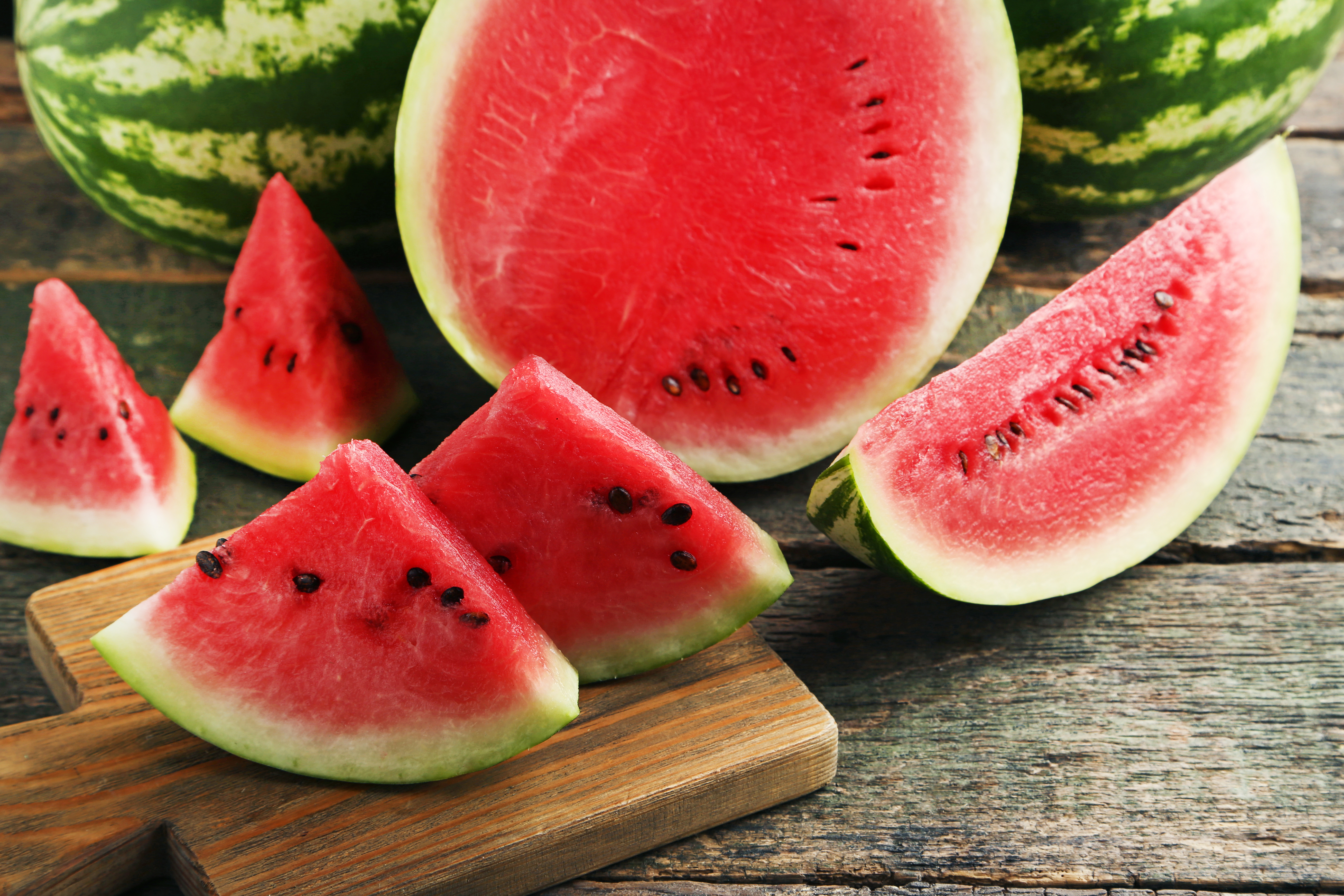
Watermelon – Citrullus lanatus
Citrullus
Watermelon – Citrullus lanatus
- Description: This is the classic “watermelon” that many people know and love. There are likely over 1,000 varieties of watermelon cultivated throughout the world.
- Taste: True to their name, watermelons have a high water content. Thus, the fruit possesses a sweet, dilute flavor.
- Growth region: They originated in Africa, but are grown throughout the world now.
Colocynth – Citrullus colocynthis
- Description: the colocynth, also known as the bitter apple, desert gourd, or bitter cucumber originally bore the scientific name Colocynthis citrullus. It is an extremely hardy melon that can grow in desert conditions approaching 30 degrees Celsius.
- Taste: It produces hard, small fruits with somewhat bitter melon flesh.
- Growth region: native to the Mediterranean area, especially Turkey.
Citron melon – Citrullus caffer
- Description: this watermelon relative is known by many names such as fodder melon, the red-seeded citron, jam melon, Kalahari melon, or pine melon. While it can be eaten raw, it is often pickled or used for fruit preserves.
- Taste: the hard, white flesh can be somewhat chewy and lacks the sweetness of a “regular” watermelon.
- Growth region: native to Africa, although it is now grown in the United States as well.
Cucumis melo
The next genus of Cucurbitaceae is Cucumis. One species in particular, Cucumis melo, is responsible for dozens of varieties of melon. These sweet fruits make great treats for humans and pets alike. Let’s take a look at some of the different types of melons belonging to C. Melo.
Muskmelon
- Description: this is the parent varietal from which all other varieties stem. Most varietals are small to medium-sized. A large portion of them are smooth-skinned, but some have a rough outer texture.
- Taste: due to the sheer number of muskmelons, it is hard to pinpoint an exact flavor profile, but the name gives a hint: musky. Muskmelons are different from watermelons in that they tend to be much less sweet.
- Growth region: depends on the exact melon, global distribution.
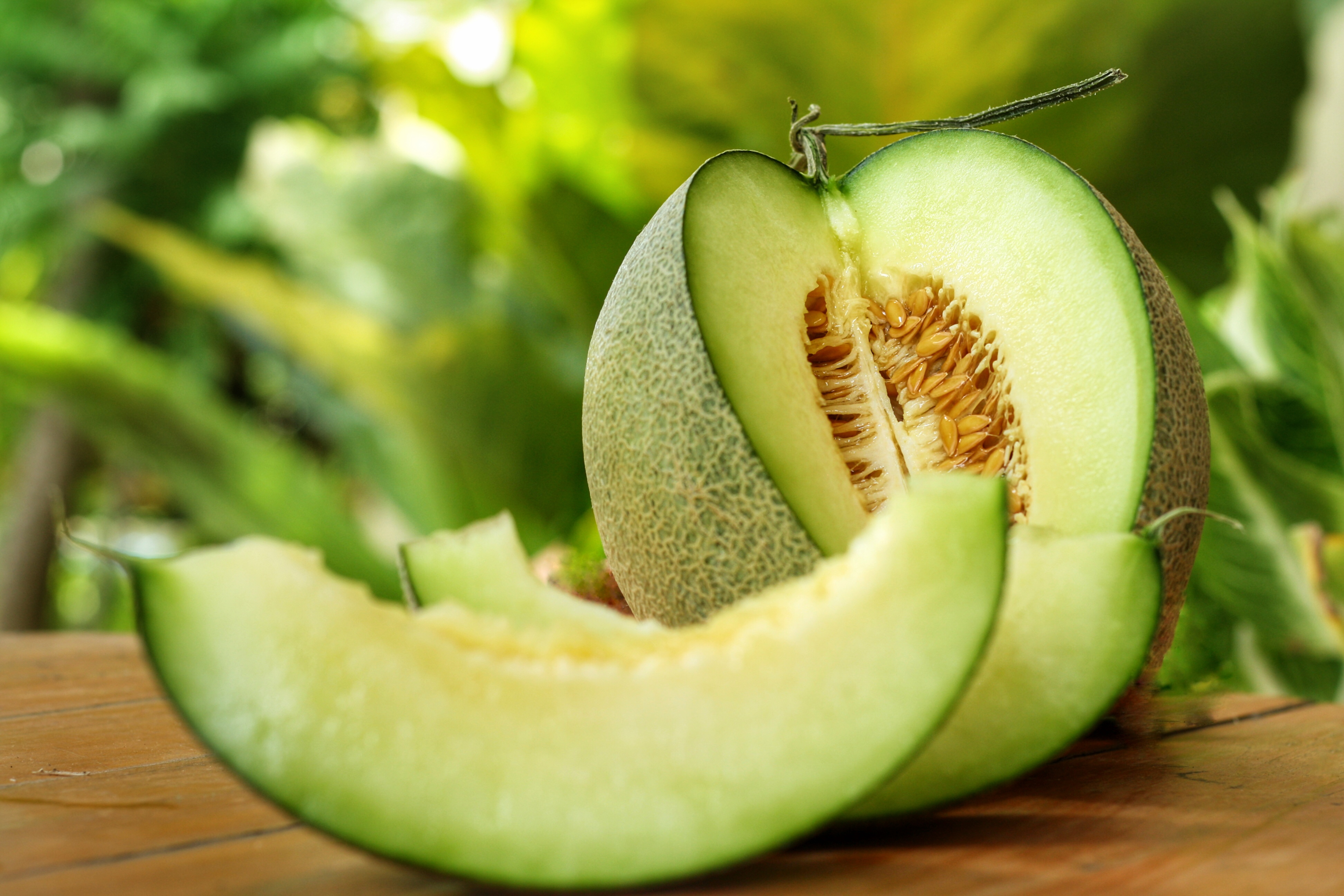
Honeydew melon
Honeydew
- Description: Also known as the green melon, the honeydew is known for being a less-sweet cousin of the cantaloupe. It is very common in fruit spreads.
- Taste: Honeydew melons typically retain the musky, fragrant flavors of other muskmelons, but they possess a slightly subdued flavor.
- Growth region: The melon is thought to have originated in the Middle East.
Bailan
- Description: The bailan melon is very well known in small parts of China. It is a very close offshoot of the honeydew melon, differing mostly in its distinct yellow or orange color.
- Taste: The flesh is dense and typically very sweet. This is possible due to the concentration of sugars as a result of its slightly reduced size.
- Growth region: This melon is most commonly grown in Gansu Province, China.
Crenshaw
- Description: To some, the crenshaw melon strikingly resembles a pineapple without the “fur.” They are typically green-yellow and can weigh up to 10 pounds.
- Taste: The flesh can be “very sweet with a slightly spicy aroma.”
- Growth region: The crenshaw is one of the melon varieties believed to originate in the Middle East.
Casaba
- Description: These melons can be recognized by their distinct, wrinkled skin.
- Taste: The casaba melon is known for being extremely juicy, sweet, and at times, “creamy.”
- Growth region: Originally from Persia, the casaba melon was imported to the United States from Kasaba, Turkey sometime in the 19th century.
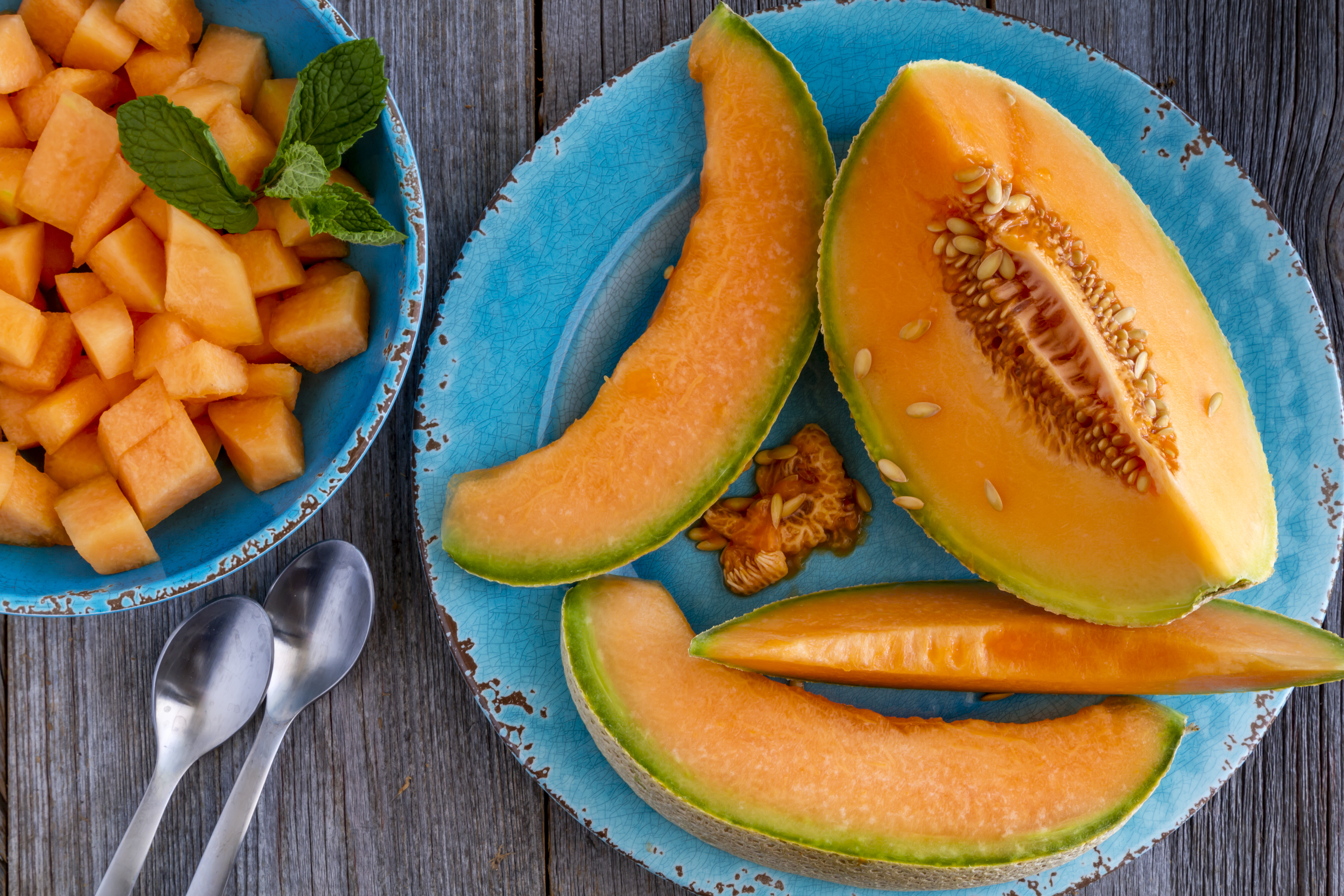
Cantaloupe (North American)
- Description: Cantaloupes are one of the most commonly grown melons in the United States. In 2017, roughly 14 million pounds of cantaloupe were produced. Their scaly, distinctive skin and orange, sweet flesh makes them a favorite melon. It is a very common fruit plant.
- Taste: The American cantaloupe melon is known for being musky and not overly sweet.
- Growth region: This melon hails from Africa and India, but it was brought to the Americas from Armenia in the late 19th century. Cantaloupe also thrive when grown in the Caribbean as well.
Cantaloupe (European)
- Description: The European variety of the cantaloupe looks distinctly different from the American version due to its green, lined netted rind. The European cantaloupe originated in Persia and was imported to Europe in the 15th century.
- Taste: The flavor differences between the versions is slight, and each of them may also respond well to grilling or cooking.
-
- Growth region: They are mainly grown in western and southern Europe.
Christmas
- Description: This melon is also commonly called the Santa Claus melon. It has a thick, lime-green rind. Interestingly, it will typically keep for several months in the fridge.
- Taste: The Christmas melon is similar in taste to the honeydew.
- Growth region: It originates from Spain, where it is still commonly grown. Additionally, it is cultivated in California, Arizona, and South America.
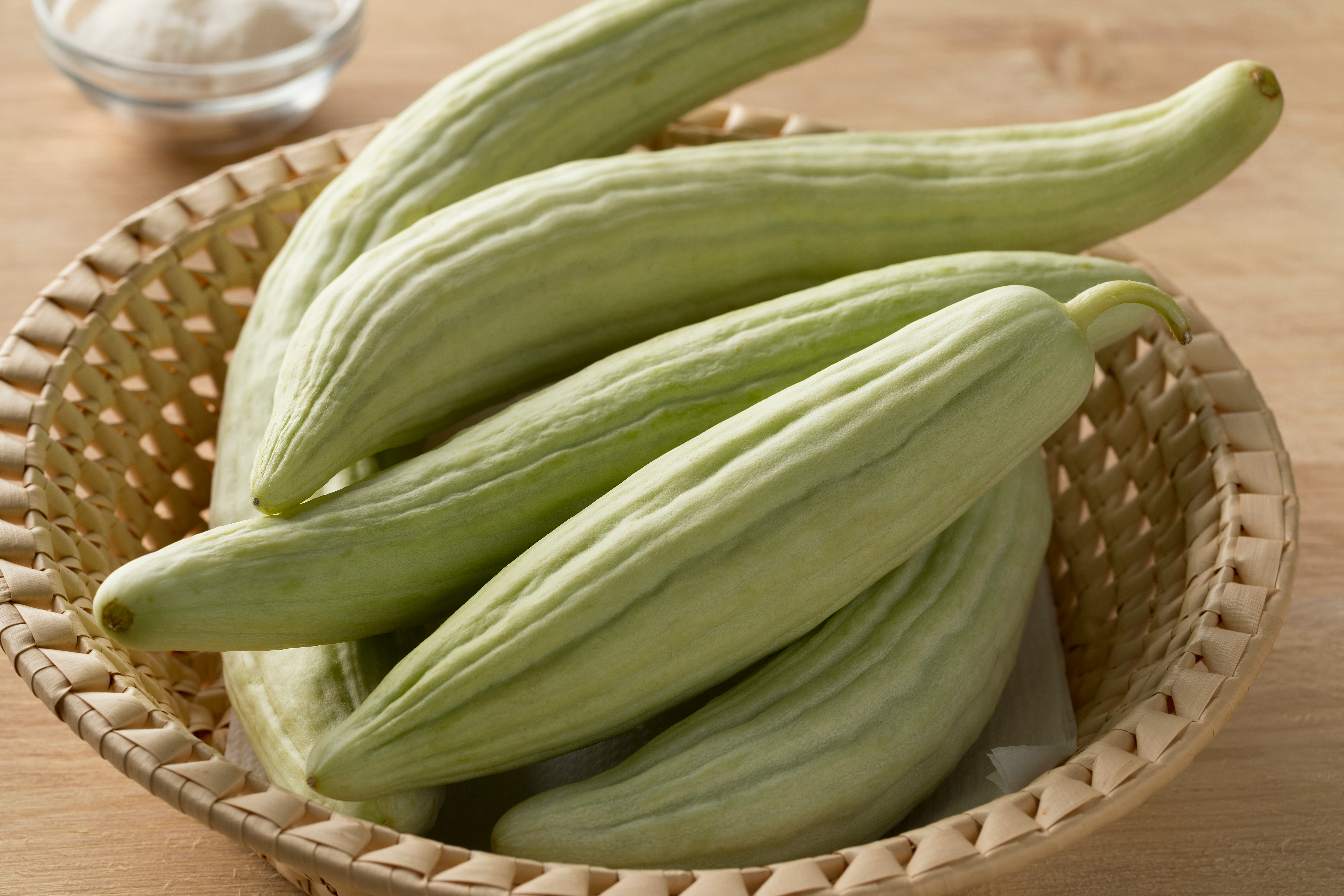
Armenian Cucumber
Armenian Cucumber
- Description: This melon almost doesn’t look like a melon at all! As the name suggests, it strikingly resembles a cucumber, although it is much longer – sometimes over three feet.
- Taste: The flavor is very similar to a cucumber but slightly sweeter.
- Growth region: It is thought to originate in Egypt and is now widely grown throughout the Americas.
Israel
- Description: The Israel melon is closely related to the the crenshaw and baila melons. It has smooth skin, white flesh, and is the size of a cantaloupe.
- Taste: This melon is considered a “fast” melon because it ripens on the vine in about 70 days. Due to this, it has a somewhat subdued but still sweet flavor.
- Growth region: The Israel melon can be grown in most semi arid regions.
Snap
- Description: From a distance, snap melons almost look like hunks of bread. They are a lighter orange, almost tan color. Generally, they range from 5-7 inches in diameter.
- Taste: Snap melons can be too bitter and “mealy” to eat on their own. They can be mixed with sugar or other melons to bright out their bright, floral flavors.
- Growth region: Similar to many other muskmelon varieties, snap melons are grown most commonly in Europe and the Americas.
Honey Globe
- Description: Honey globe melons can be recognized by their white skin and light green flesh. They look similar to honeydew or bailan melons.
- Taste: This melon is actually a crossbreed between honeydew and bailan relatives, so its taste is a hybrid of those two.
- Growth region: Also native to Persia, this melon is regularly grown in Western Europe and the United States.
Ananas
- Description: This melon is an “heirloom” harking back to the mid-1800’s. Vines typically produce 2-3 fruits that each weigh roughly five pounds.
- Taste: Their flavor is “sweet, aromatic, and slightly spicy.”
- Growth region: These grow best in warm growing conditions, especially in Southern Italy.
Sprite
- Description: The sprite melon is one of the smaller melons on this list. It grows to roughly the size of a grapefruit and weighs about a pound. It is usually a stark-white color with medium netting on its skin.
- Taste: The flesh is so sweet that it is often eaten for dessert.
- Growth region: It originates from Japan, and is still grown there most commonly.
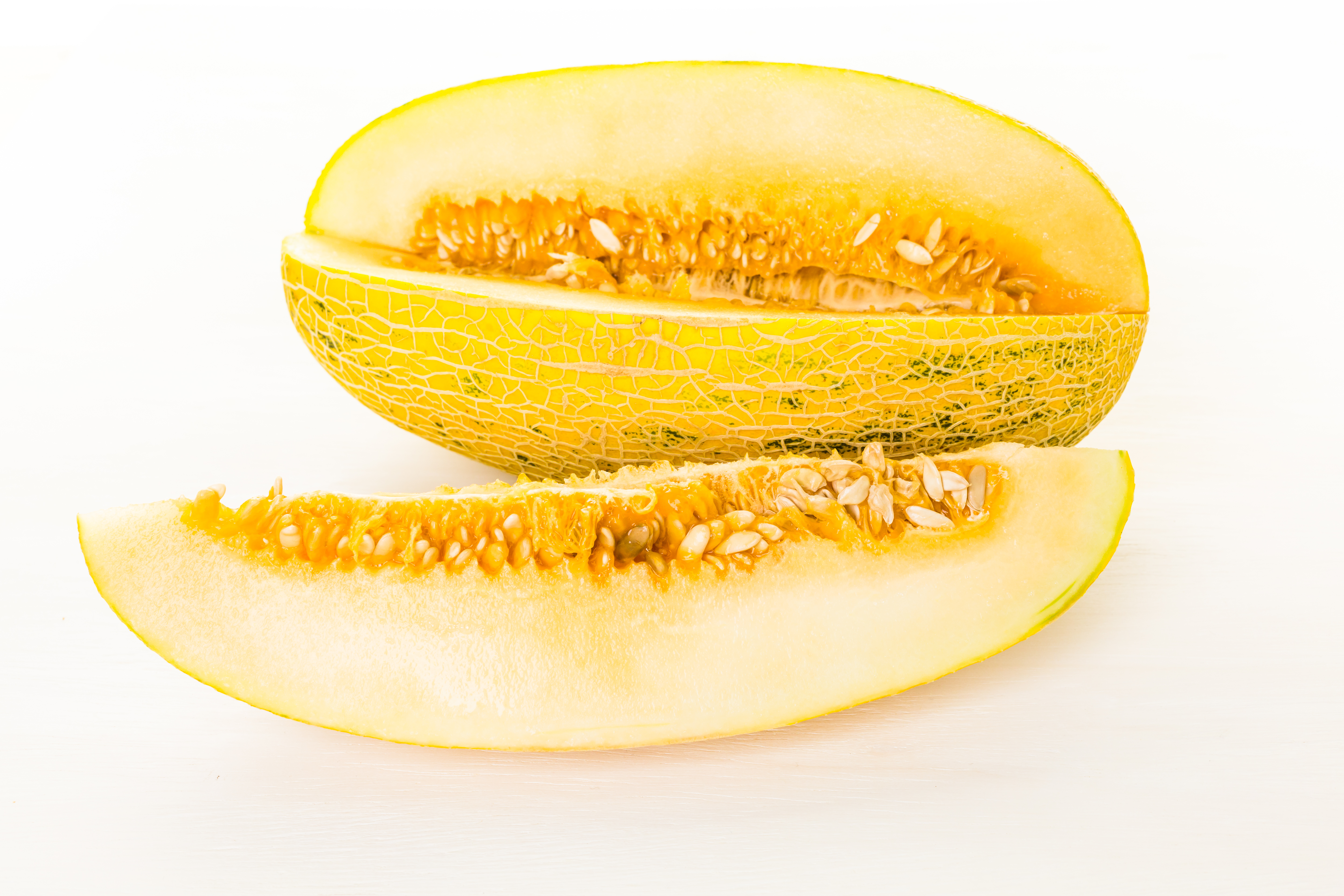
Persian melon
Persian
- Description: Also known as Odessa melons, this cultivar of C. melo is shaped more like a classical gourd: elongated. It is unridged and usually has off-green skin with deep orange flesh.
- Taste: Persian melons taste similar to cantaloupe, but due to their enlarged size, they are noticeably less sweet.
- Growth region: As the name would imply, they originate from Persia, but are now grown throughout Europe and North America, albeit less commonly than other melons.
Caravelle
- Description: These melons are a hybrid developed to use less water. They are visually similar to cantaloupe, but are slightly smaller and have less vibrantly orange flesh.
- Taste: Caravelle melons are firmer than winter melons but have a similar taste.
- Growth region: Like cantaloupe, caravelle are grown in hot, semi arid climates like Oklahoma and Northern Texas.
Korean
- Description: This is one of the very few melons that can be eaten whole. The Korean melon’s thin, yellow skin and small seeds make this possible. There are many varieties that range from round to oblong.
- Taste: This Asian melon is considerably less sweet than European varieties and tastes more similar to a cucumber.
-
- Growth region: The Korean melon is typically cultivated in Eastern Asia, including Vietnam.
Saticoy
- Description: The saticoy melon is relatively young – it was only developed in the mid-1980s. Hailing from California, this melon looks almost exactly like a cantaloupe. The difference is that the saticoy is more drought-tolerant.
- Taste: These melons taste similar to cantaloupe, but are slightly less sweet.
- Growth region: The parent muskmelon originated in Persia, but saticoy was developed in California.
Charentais
- Description: Another heirloom melon, the charentais is usually quite expensive. Renowned for its almost perfectly round shape, the charentais melons have netting similar to that of a cantaloupe.
- Taste: These melons are known for having a more refined taste than cantaloupes. They contain slightly less sugar content and are usually a little more tart.
- Growth region: Charentais melons can tolerate colder temperatures and thus are viable in Colorado and the Dakotas as well as Western Europe.
Hami
- Description: Also known as the Chinese melon or snow melon, hami melons are generally light yellow with green streaks.
- Taste: Hami melons have an extremely “crisp” sweet flavor, similar to some apples.
- Growth region: While these melons can be grown around the world, more than 100 varieties exist in mainland China.
Rocky
- Description: These are also known as rocky sweet melons or rocky ford melons. Their rind is brown-green, and they are rather small, averaging 3-5 inches.
- Taste: Rocky melons are classic sweet melons and are usually served fresh and ripe.
- Growth region: Typical of netted cantaloupes, Rocky melons grow well in warm, semi-arid climates such as Colorado and Western Texas.
Golden Langkawi
- Description: In appearance, the golden langkawi is very similar-looking to the canary melon. It has bright yellow skin and soft, white flesh.
- Taste: This melon is slightly sweeter than the canary melon and honeydew melon.
- Growth region: The name is derived from the city where it is grown most commonly, Langkawi, Malaysia.
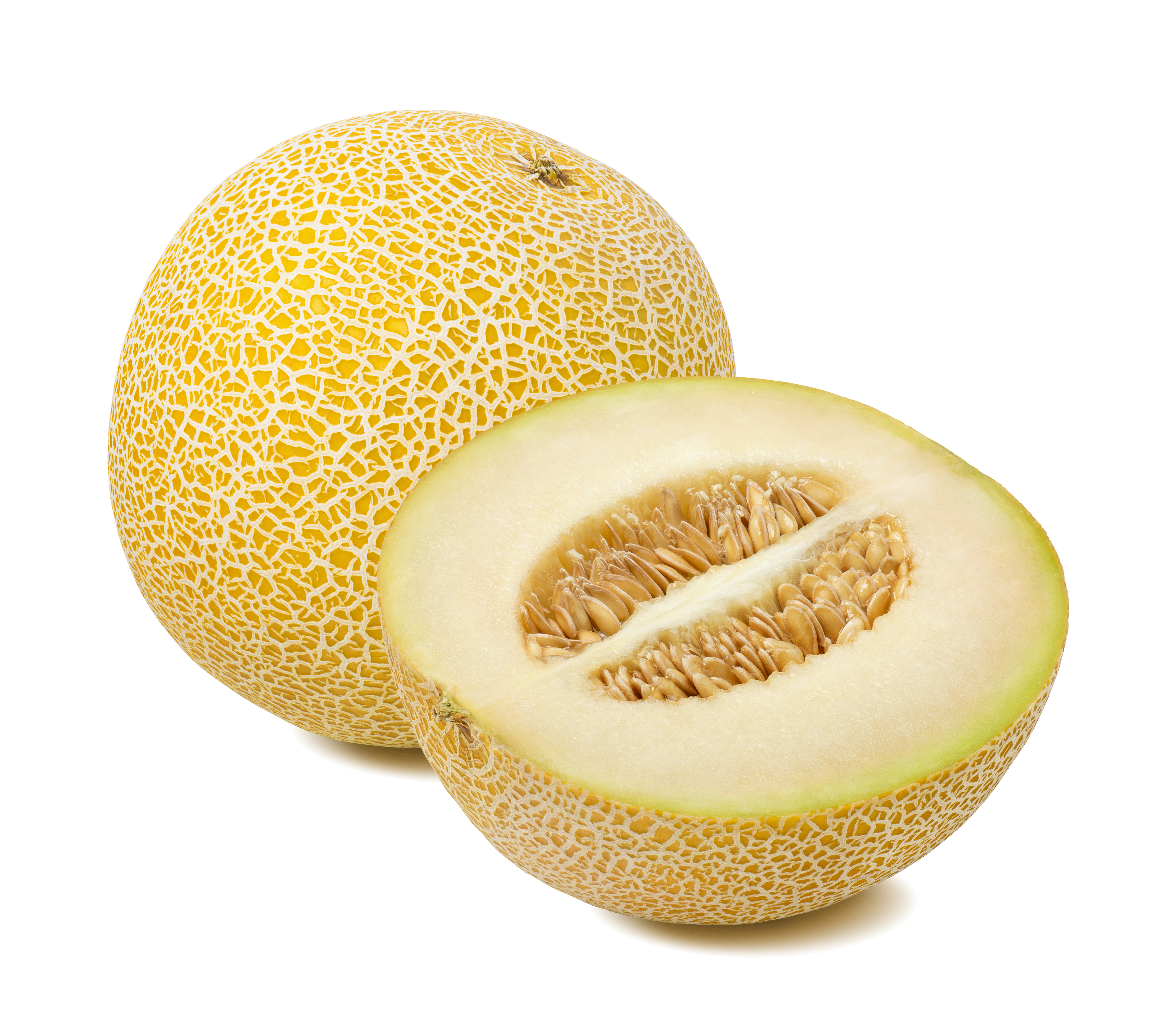
Galia melon
Galia
- Description: The galia melon is a true cross-breed. It resembles a large orange or lemon, has the texture of a cantaloupe, and possesses the flesh of a honeydew. The melon is a cross between two other muskmelon cultivars.
- Taste: Galia flavor is a complex combination of cantaloupe and honeydew.
- Growth region: These melons have generally only been capable of growing in rather arid climates, but in the early 21st century were adapted to grow in the southern United States.
Autumn Sweet Melon
- Description: The autumn sweet melon is a small, golden-yellow melon. It typically weighs up to four pounds. It can also be recognized by its white flesh.
- Taste: This melon has a distinctly watery-sweet taste.
- Growth region: Similar to honeydew, this melon is best grown in semi-arid conditions.
Sky Rocket
- Description: This melon is visually similar to honeydew, but has a much harder rind. It also has brown skin with off-white flesh.
- Taste: The flavor is similar to honeydew, but the texture is much rougher and chewier.
- Growth region: The sky rocket is relatively uncommon, but is grown in Southern Europe and the Americas.
Jade Dew
- Description: Jade dew melons are typically an off-white color. When exposed to the sun, their rind can turn dark green. The flesh is a dull-green color.
- Taste: The jade dew is somewhat unique in that its flesh is slightly “crunchy.”
- Growth region: This cross originated in southeast Asia but is now grown throughout the Americas.
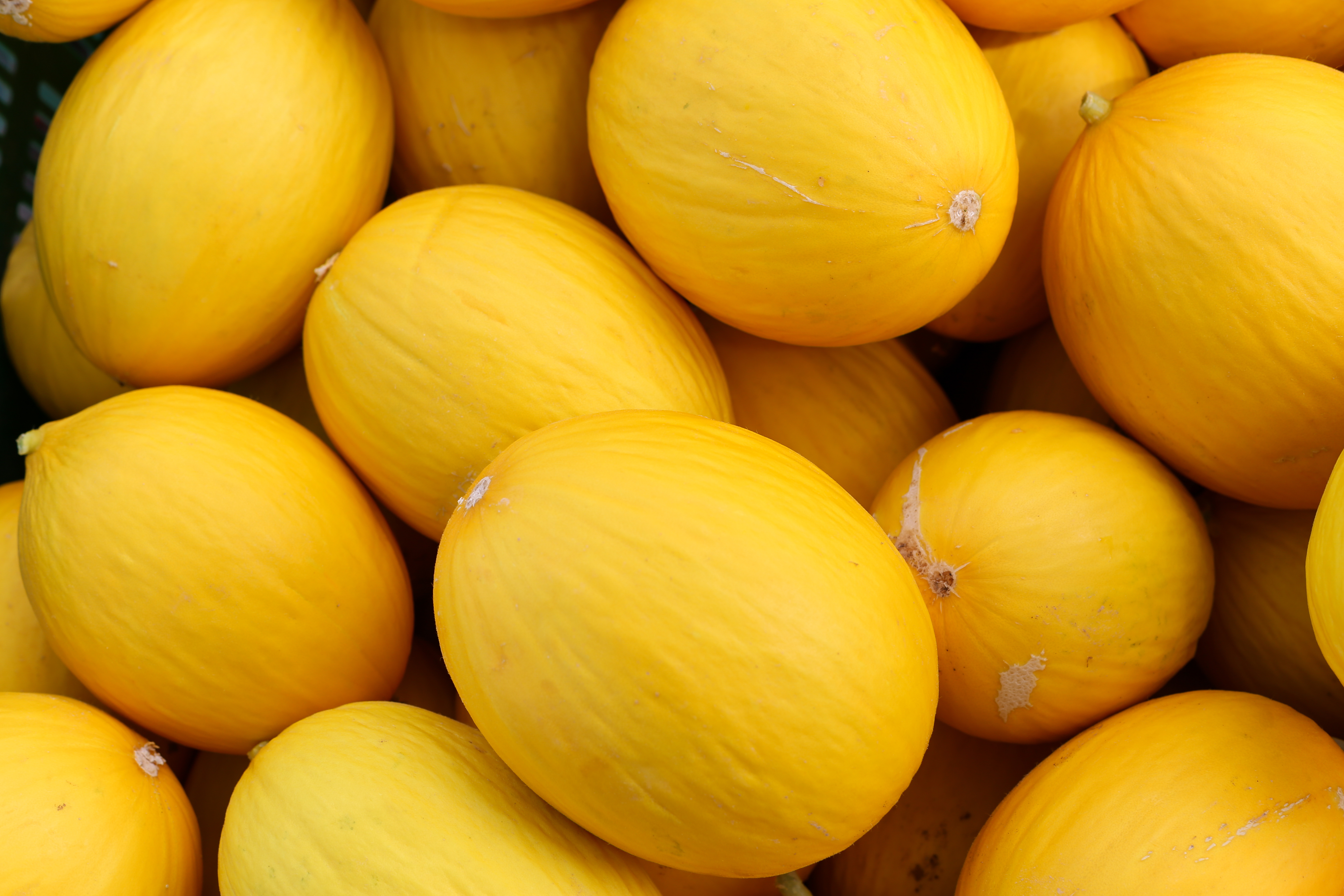
Canary melon
Canary
- Description: The canary melon is another odd specimen. The skin of the fruit is a vibrant orange color, and the flesh is typically bright white. The name allegedly is derived from the color of the skin and its similarity to the bird.
- Taste: The canary melon tastes slightly tangier than a honeydew, and the flesh has the consistency of a softened pear.
- Growth region: This melon grows well in Asia, Northern Africa, and the Americas.
Golden Prize
- Description: The golden prize is visually similar to the canary and golden Langkawi melons. Typically, its flesh is orange and very soft.
- Taste: Unlike some melons the golden prize tends to get sweeter the longer it sits at room temperature. 1-2 weeks at full ripeness can produce the fullest flavor.
- Growth region: The golden prize is fairly drought resistant, and it can be grown in the desert south of the United States.
Ten Me
- Description: The ten me melon is another expensive Japanese melon. It can have green or yellow-white skin. The flesh is typically firm and off-white.
- Taste: These melons can sometimes cost over $100, even for dented and imperfect fruits. The high cost is due to their alleged sweetness and crisp flavor.
- Growth region: While it is a famous Japanese melon, the ten me is also grown in other parts of Asia and around the world.
New Century
- Description: The new century melon looks very similar to its Chinese counterpart: the hami melon. It is typically oblong and slighter smaller than the hami, usually around 3-4 pounds.
- Taste: The elongated shape tends to produce different flavor profiles in the center and near the rind, with the center being more flavorful and crisp.
- Growth region: The new century was originally cultivated in China, but can be grown in most semi-arid regions.
Banana
- Description: This heirloom melon takes its name from its distinct banana shape and color. It can reach about 5 pounds in mass.
- Taste: The banana melon is named for its looks, not its taste. It is generally one of the sweeter muskmelon varieties.
- Growth region: This hardy melon can be grown throughout most regions in the United States.

Yubari King
Yubari King
- Description: Yubaris may be the most expensive melons on this list. They are renowned for this perfect spherical shape. In 2017, a pair of them sold for $26,000.
- Taste: Not many people have had, or even seen, yubari kings. Their taste is said to be sugary sweet and watery.
- Growth region: The Yubari King is only grown in Yūbari, Hokkaido, Japan.
Camouflage
- Description: Also known as the “frog skin melon,” this muskmelon “hides” among watermelons with its dark, green, mottled skin.
- Taste: Camouflage melons taste somewhat similar to watermelons, but have a more concentrated flavor.
- Growth region: The skin of camouflage melons is rather thin, so they are generally consumed close-by where they are grown: the Western US and Europe.
Crane
- Description: Richard Hope Crane developed the crane melon in the early 20th century in Santa Rosa California. The melon is approximately cantaloupe-sized, but it has smooth skin and mottled green and pale yellow patterns.
- Taste: The crane melon doesn’t travel well as it spoils quickly. When it is ripe, it’s flavor is extremely sweet and rather soft.
- Growth region: It is only grown and sold at the Crane Melon Barn in Santa Rosa, California.
Sugar
- Description: Also known as sugar kiss melons, the sugar melon is like a smaller, more spherical cousin to the cantaloupe. Besides the size, the only noticeable difference typically is the tighter netting pattern present on the sugar melon.
- Taste: The reduced size generally concentrates the flavor of the sugar melon. As one would expect, it is rather sugary.
- Growth region: Unlike many melons, sugar melons can grow fairly well in non-arid environments like Oregon and southern Washington.
Tiger/Tigger
- Description: This melon is easily recognizable by its striped, “tiger” skin. They grow up to roughly 11 pounds, but they are so dense they can usually fit in the palm of your hand.
- Taste: The flesh is very sweet and very firm.
- Growth region: Tiger melons are drought resistant, so they can grow in Southern Europe and the Americas.
Vert Grimpant
- Description: Also known as the “green climbing melon,” verts are types of melons that grow very well on a trestle. They have green mottled skin and grow up to several pounds.
- Taste: The vert can be a difficult melon to pick at correct ripeness. It is not nearly as sweet as other muskmelons, and can even taste bitter if picked too early or too late.
- Growth region: The vert is a French heirloom, but is now grown worldwide.
Other Cucumis
Outside of C. melo, there are several other notable Cucumis species.
Cucumber – Cucumis sativus
- Description: While not technically a melon, the classic cucumber shares many attributes. Its flesh is usually off-white and green, and the skin is normally a deep green.
- Taste: Many classic melons share parts of the cucumber flavor profile: watery, crisp, and mellow-sweet.
- Growth region: There are many, many varietals of cucumber that grow in desert climates like Arizona, and wet climates like Argentina.

Horned Melon – Cucumis metuliferus
Horned Melon – Cucumis metuliferus
- Description: Also known as the kiwano, the horned melon is one of the oddest looking fruits on our list. Its small, yellow body is covered in small spikes, and the flesh is an electric green color.
- Taste: The horned melon is also called a “jelly melon” sometimes. The flesh is very sweet and has a gummy flavor to it.
- Growth region: The fruit originated in Africa but has since moved to markets around the globe.
Maroon Cucumber – Cucumis anguria
- Description: These melons are another melon/cucumber hybrid. While many sweet gherkin pickles are made from C. anguira, the raw fruit of many varieties is more melon-like.
- Taste: Many of the varietals of maroon cucumbers are tart and earthy, but some are sweet and crisp.
- Growth region: Maroon cucumbers are only native to Africa, but are now cultivated in most parts of the world.
Non-Cucumis Melons
Although smaller in number of species, genera outside of cucumis possess species of melons that are just as interesting, tasty, and unique.
Winter – Benincasa hispida
- Description: also known as an ash gourd or white gourd, this variety of melon is often eaten more as a vegetable than as a fruit. It is the only member of the genus Benincasa.
- Taste: Winter melons have been described as tasting like a cross between pumpkins and honeydew.
- Growth region: Several varieties of winter melon exist, and they can grow from Florida to Spain.

Cucamelon – Melothria scabra
Cucamelon – Melothria scabra
- Description: Also known as mouse melons, these fruits are almost like little candies. They grow to the size of grapes and look like miniature watermelons.
- Taste: They are not nearly as sweet as their size would suggest. Cucamelons usually taste like slightly sweet cucumbers.
- Growth region: Cucamelons are native to Mexico, but a large portion of the crop is now grown in California.
Gac Melon – Momordica cochinchinensis
- Description: The gac melon has an unassuming outside of brown and orange skin covered in small spikes and dimples. When it is cut open, the flesh is exposed to be a brilliant pink and red. They grow to the size of a softball usually.
- Taste: The gac has an… interesting taste. The flavor is a mix between avocados and cantaloupe.
- Growth region: The gac is primarily grown in SE Asia and Northern Australia.
Spiny Gourd – Momordica dioica
- Description: Also known as the bristly balsam pear, prickly carolaho, the spiny gourd is visually similar to the gac and horned melons. It is the size of a golf ball and the skin is usually green.
- Taste: The spiny gourd is another example of a melon that is very sensitive to picking time. When picked at the right time, spiny gourds are tart and taste like cucumber.
- Growth region: M. dioica is native to India, where it is still commonly cultivated.
Casabanana – Sicana odorifera
- Description: Also known as the sikana or puttigel, the casabanana is another melon not within C. melo. The skin can be a variety of colors, but the flesh is typically yellow-orange.
- Taste: The flavor is halfway between a classic melon and a more typical starchy vegetable profile.
- Growth region: This melon is native to South America.
Pepino – Solanum muricatum
- Description: Technically, the Pepino (sweet cucumber) isn’t a melon. It is not a member of the gourd family, Cucurbitaceae. It isn’t even in the same order as melons, either. That said, culinarily, it is treated like a melon. They look like honeydew and have smooth, mottled skin.
- Taste: They usually have a mellow honeydew-cantaloupe-cucumber blend of flavors.
- Growth region: This “melon” is native to South America.











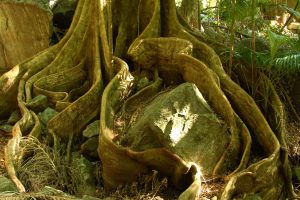

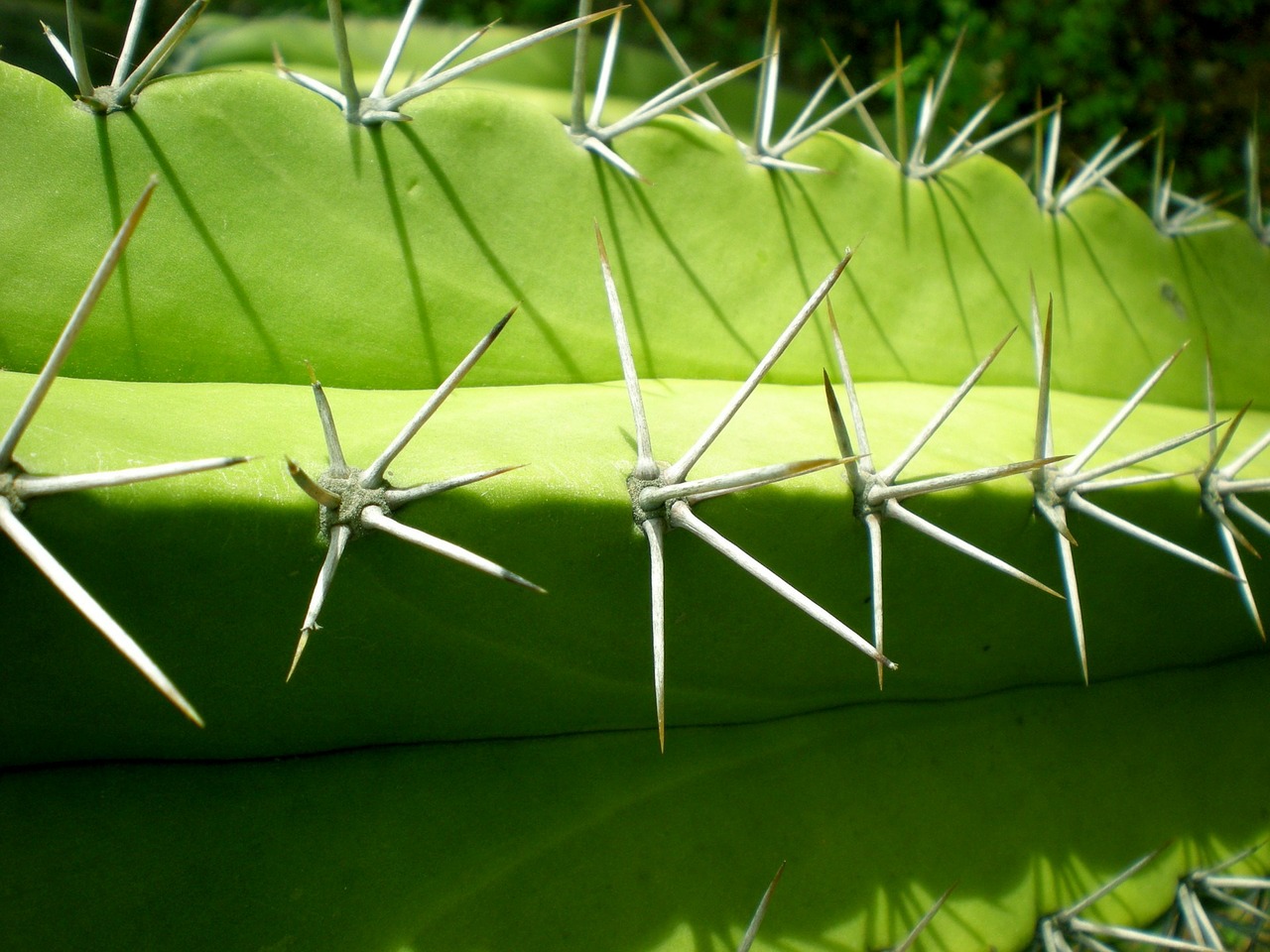
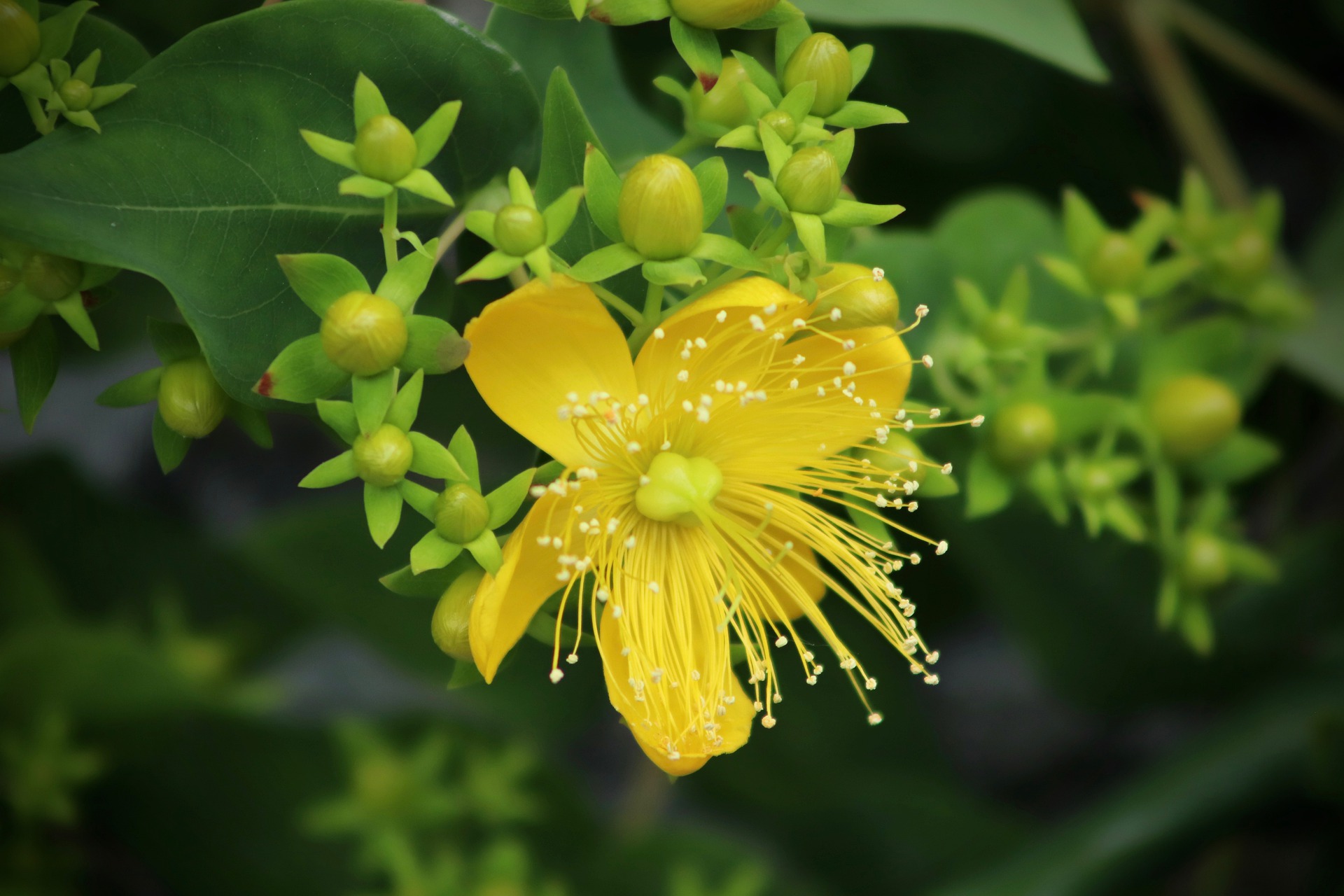
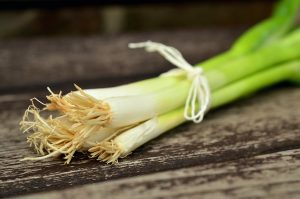
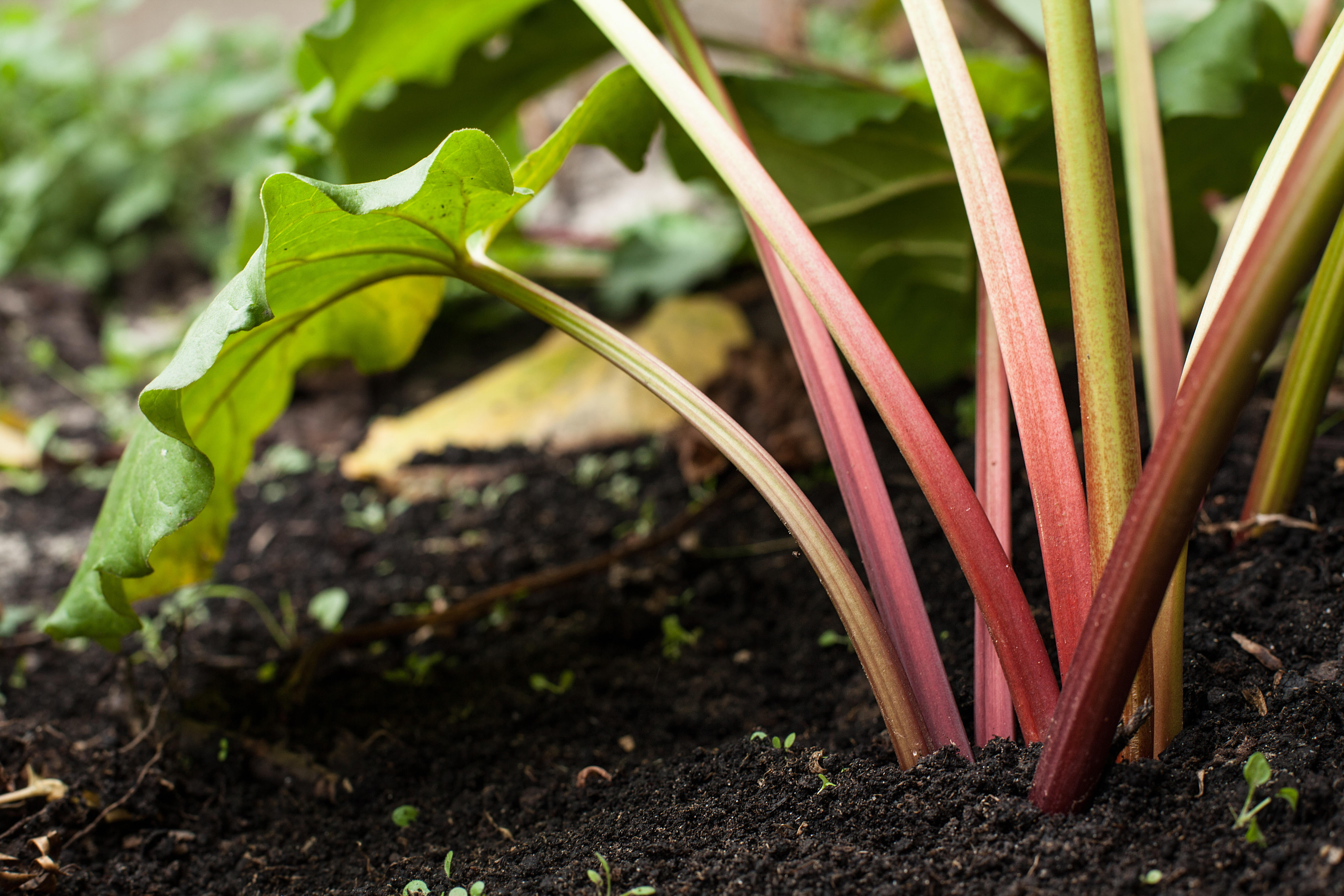

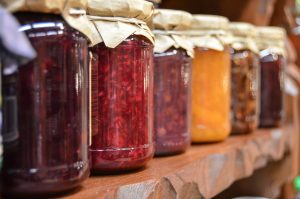

0 Comments